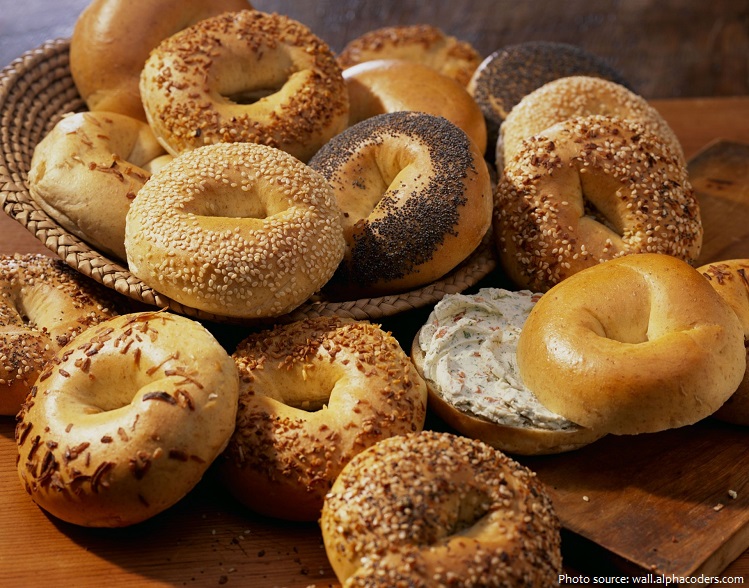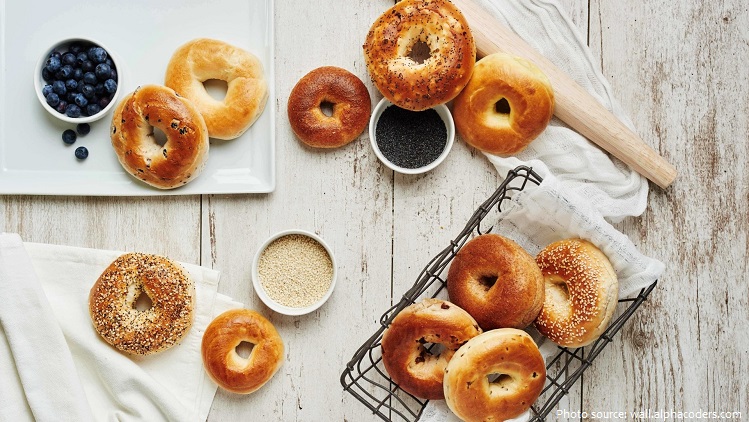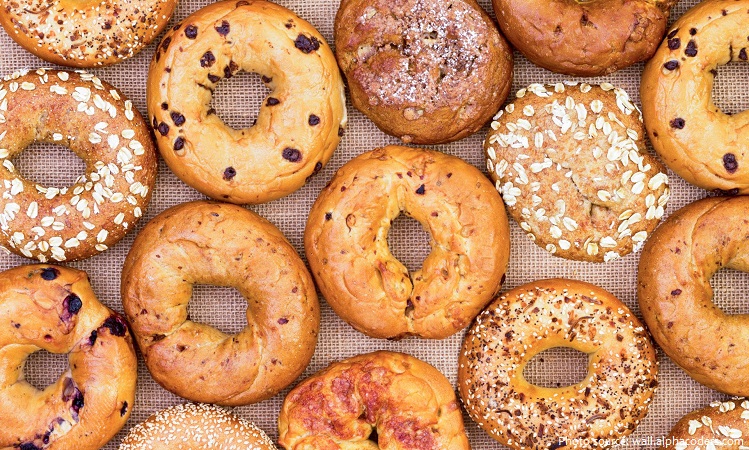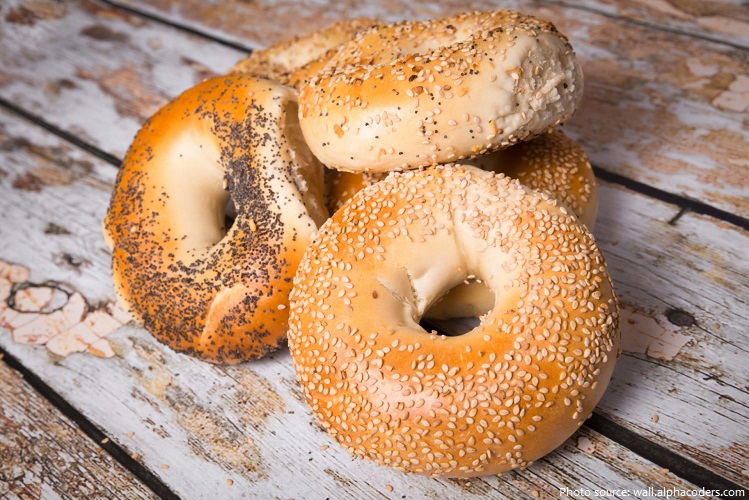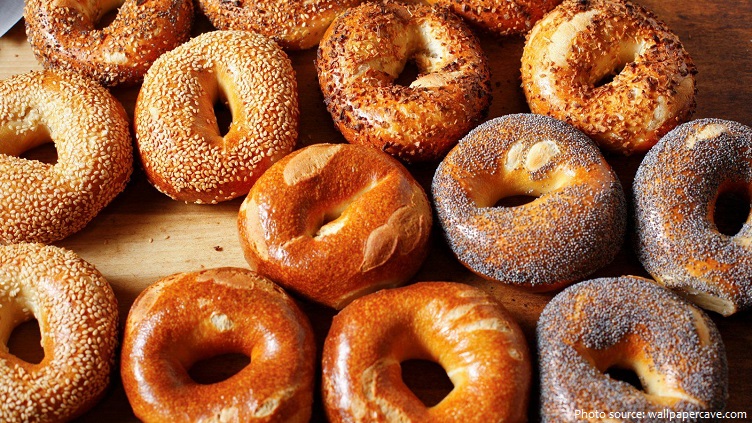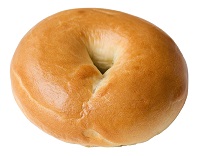Bagel also historically spelled beigel is doughnut-shaped yeast-leavened roll that is characterized by a crisp, shiny
crust and a dense interior.
Bagels are made from the basic bread ingredients of flour, yeast, salt, and sweetening.
As traditionally made, the dough is shaped by hand into a ring, boiled for a short time in water to seal the dough to ensure a compact texture, and then baked.
In modern mass production, the rings are machine-made, and steaming may be substituted for boiling.
Traditionally or modern, a glaze of egg yolk or milk applied before baking produces a shiny crust.
Seeds and spices may be added before baking; bagels also are made with flavourings, vegetables, nuts, or fruits mixed into the dough, although purists scorn such innovations.
The word “bagel” comes from the Yiddish word, bajgiel.
In the 16th and first half of the 17th centuries, the bajgiel became a staple of Polish cuisine and a staple of the Slavic diet generally.
A widely repeated legend traces its history to Vienna in 1683, when John III Sobieski, king of Poland, successfully defended the city from a Turkish invasion. A local baker, wishing to commemorate the victory of this accomplished horseman, fashioned his bread in the shape of a stirrup (the present-day German word for which is Bügel).
When Polish Jews went away to the United States, they brought the beugel with them.
The first beugel bakeries were founded in New York City in the 1920s. Later the name was changed and called a bagel.
Bagels were made ubiquitous in the United States by a successful Polish-American baker, Harry Lender, and his sons, who used humor in advertising to reach out to middle America with a traditionally ethnic, northeastern food.
As Jews immigrated from Europe to North America, many settled in Toronto and Montreal, Canada, which created their own style of bagels distinct from the New York style.
What separates the bagel from the rest of the rolls is the flour quality and the processing. Traditional bagels were made with very high protein, spring wheat flour.
Bagel are eaten usually for breakfast or a snack.
The Westin Hotel holds the distinction of selling the most expensive bagel in the world. Chef Frank Tujague is behind the pricey pastry that costs $1,000. The Westin Hotel’s $1,000 bagel is topped with white truffle cream cheese and a Riesling jelly infused with goji berries and gold leaf.
The world’s largest bagel weighed 393.7 kg (868 lb) and was made by Brueggers Bagels (USA) and displayed at the New York state fair, Geddes, New York, USA on 27 August 2004.
Bagels are sometimes called “the cement doughnuts”.
They are different from doughnuts because they are boiled before baked.
Russian bubliks are very similar to bagels, but are somewhat bigger, have a wider hole, and are drier and chewier.
The bagel has been regarded as a Jewish specialty, in part because its method of preparation made it popular among Jews as a convenient form of bread that could be baked without breaking the rule of no work on the Sabbath.
In the United States, February 9 is often celebrated as National Bagel Day, in which people celebrate the rich history of getting together and eating bagels.
Bagels have been used as a symbol of the continuous cycle of life—without beginning and without end.
In tennis, a “bagel” refers to a player winning a set 6–0; winning a match 6–0, 6–0, 6–0 is called a “triple bagel.”
“Bagel” is also a Yeshivish term for sleeping 12 hours straight—e.g., “I slept a bagel last night.”
